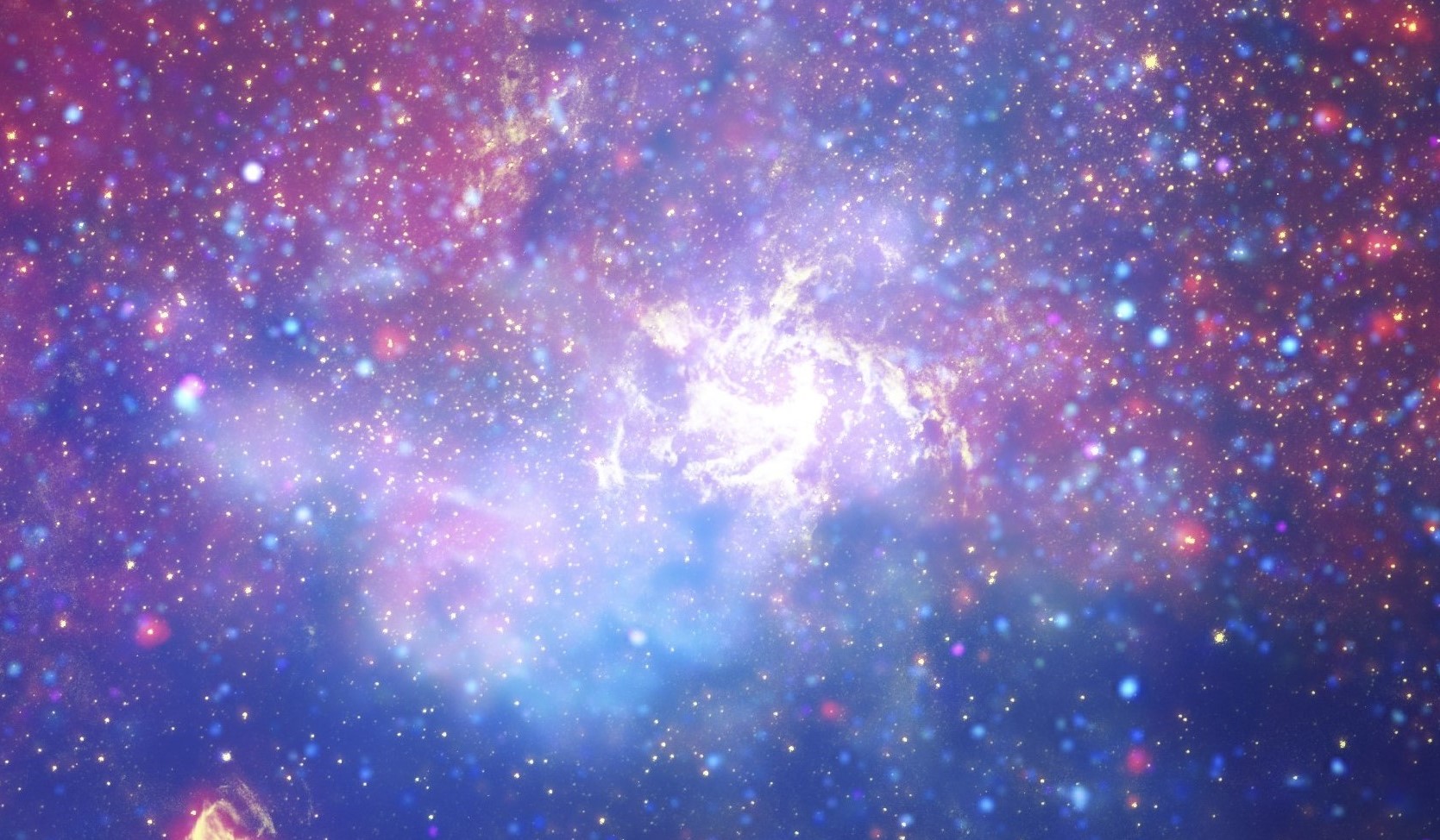
The Galactic Center, located in the heart of our Milky Way galaxy, is a captivating and enigmatic region that has intrigued astronomers and scientists for centuries. This cosmic hub holds numerous mysteries and secrets waiting to be unraveled. From its gravitational pull to its role in the formation of stars, the Galactic Center is a focal point of scientific research and exploration.
In this article, we will delve into 17 fascinating facts about the Galactic Center, shedding light on its significance in the cosmos. Get ready to embark on a journey through the celestial wonderland that lies at the very center of our galaxy. From supermassive black holes to the origins of cosmic rays, prepare to be amazed as we explore the captivating world of the Galactic Center.
Key Takeaways:
- The Galactic Center in the Milky Way is a supermassive, active region with intense star formation, powerful radiation, and mysterious signals, making it a hotbed for scientific exploration and discovery.
- With a supermassive black hole, massive stars, and extreme temperatures, the Galactic Center is a cosmic hotspot for gravitational waves, stellar collisions, and the study of galaxy evolution.
The Galactic Center is located in the Milky Way.
The Galactic Center refers to the region at the core of our galaxy, the Milky Way. It is a dense and highly active area that holds many mysteries and fascinating phenomena.
The Galactic Center is supermassive.
At the heart of the Galactic Center lies a supermassive black hole called Sagittarius A*, which has a mass equivalent to about 4 million suns. This colossal gravitational force shapes the dynamics of the surrounding stars and gas clouds.
The Galactic Center is a hub of intense star formation.
Within the Galactic Center, there are massive molecular clouds that serve as nurseries for the formation of new stars. This region exhibits an astonishing rate of star birth compared to the rest of the galaxy.
The Galactic Center has powerful magnetic fields.
Magnetic fields play a crucial role in the dynamics of the Galactic Center. They shape the motion of particles and influence the behavior of stars, gas, and dust in this region.
The Galactic Center emits powerful radiation.
High-energy radiation, including X-rays and gamma rays, is produced within the Galactic Center. This radiation originates from various sources such as black holes, supernova remnants, and colliding stellar winds.
The Galactic Center is a hotbed of stellar collisions and mergers.
Due to the densely packed nature of stars in the Galactic Center, stellar collisions and mergers are more likely to occur. These dramatic events can result in the formation of exotic stars or the release of gravitational waves.
The Galactic Center is surrounded by a ring of gas and dust.
Known as the Circumnuclear Disk, this ring of gas and dust encircles the supermassive black hole at the center. It is an important region for studying the formation of stars and the feeding of the black hole.
The Galactic Center influences the orbits of stars.
Stars that orbit close to the Galactic Center experience strong gravitational forces, causing their paths to be highly elliptical. These orbits can provide valuable insights into the nature of gravity and the distribution of mass in the galaxy.
The Galactic Center contains a complex system of molecular clouds.
These molecular clouds are rich in various molecules, including complex organic compounds. They serve as the building blocks for the formation of planets and potentially, the origin of life.
The Galactic Center is a source of mysterious radio signals.
Radio telescopes have detected enigmatic signals known as Fast Radio Bursts (FRBs) originating from the Galactic Center. The exact nature and origin of these signals are still not fully understood.
The Galactic Center hosts a cluster of massive stars.
In the vicinity of the supermassive black hole, there is a cluster of massive young stars called the Arches Cluster. These stars are among the most massive and luminous in the Milky Way galaxy.
The Galactic Center experiences intense tidal forces.
Due to the gravitational pull of the supermassive black hole, stars and other objects near the Galactic Center are subject to powerful tidal forces. These forces can stretch and distort celestial bodies, leading to dramatic phenomena.
The Galactic Center is a target of extensive research.
Scientists and astronomers from around the world are actively studying the Galactic Center to gain a deeper understanding of the dynamics, formation, and evolution of galaxies, as well as to probe the nature of black holes and the fabric of spacetime.
The Galactic Center emits powerful jets of particles.
Powerful jets of particles are produced by objects such as microquasars within the Galactic Center. These jets can extend over vast distances and release immense amounts of energy.
The Galactic Center is an area of extreme temperatures.
The Galactic Center experiences a wide range of temperatures, from extremely hot environments near the supermassive black hole to cold and dense molecular clouds. These temperature variations contribute to the complex dynamics of the region.
The Galactic Center is home to a population of old stars.
In addition to the young and massive stars, the Galactic Center also hosts a population of old stars that have survived for billions of years. These stars provide valuable insights into the evolution and history of the galaxy.
The Galactic Center is a source of gravitational waves.
The extreme conditions near the Galactic Center, including the presence of massive stars, black holes, and dense gas, can give rise to gravitational waves. Detecting these elusive ripples in spacetime can provide invaluable information about cosmic phenomena.
Conclusion
In conclusion, the Galactic Center is a truly fascinating and mysterious part of our universe. It is home to a supermassive black hole, which has a profound impact on the surrounding environment. From its intense gravitational pull to its role in the formation of new stars, the Galactic Center holds many secrets waiting to be discovered.
Exploring the Galactic Center provides us with a deeper understanding of the processes that shape our universe. Through advanced telescopes and scientific research, astronomers continue to unravel its mysteries and unlock new insights into the nature of black holes, star formation, and the evolution of galaxies.
As we continue to explore and study the Galactic Center, we can look forward to even more fascinating discoveries that will expand our knowledge and reshape our understanding of the universe we live in.
FAQs
1. What is the Galactic Center?
The Galactic Center is the rotational center of the Milky Way galaxy, around which the rest of the galaxy rotates. It is located approximately 26,000 light-years away from Earth.
2. What is a supermassive black hole?
A supermassive black hole is an extremely dense object with a mass millions or even billions of times that of the Sun. The supermassive black hole at the Galactic Center is known as Sagittarius A*.
3. How does the Galactic Center affect star formation?
The intense gravitational pull of the supermassive black hole disrupts nearby gas clouds, causing them to collapse and form new stars. This process, known as triggered star formation, is an important mechanism for the formation of stars in the Galactic Center.
4. Are there any planets in the Galactic Center?
While planets have not been directly observed in the Galactic Center, it is believed that there may be planets in the region. However, the extreme conditions close to the supermassive black hole make it challenging for planets to form and survive.
5. How do scientists study the Galactic Center?
Scientists study the Galactic Center using a variety of instruments and techniques, including radio telescopes, infrared observatories, and X-ray satellites. These tools allow them to observe the region across different wavelengths of light and gather valuable data about its properties and dynamics.
Galactic Center's enigmatic nature continues to captivate astronomers and space enthusiasts alike. Surprising facts about ongoing research efforts, the supermassive black hole's mind-boggling characteristics, and the complex dynamics at play within this cosmic powerhouse await your exploration. Satisfy your curiosity by delving into the following articles that shed light on the Galactic Center's most intriguing aspects, promising an unforgettable journey through the heart of our galaxy.
Was this page helpful?
Our commitment to delivering trustworthy and engaging content is at the heart of what we do. Each fact on our site is contributed by real users like you, bringing a wealth of diverse insights and information. To ensure the highest standards of accuracy and reliability, our dedicated editors meticulously review each submission. This process guarantees that the facts we share are not only fascinating but also credible. Trust in our commitment to quality and authenticity as you explore and learn with us.


